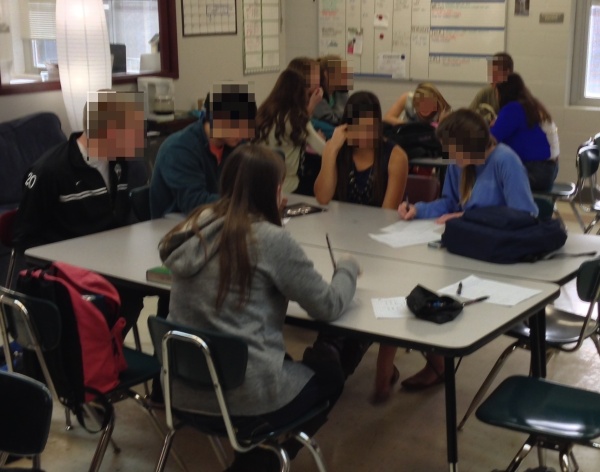So, it finally happened. I had a lesson that completely failed. I have been trying my hand at flipped and blended instruction with relative success in my first 2 lessons. My intern has jumped on the bandwagon as well, and she has created videos for her unit on
Julius Caesar. Good videos, too. Like
this one. So, when we decided to create an
Edublogs walkthrough for our sophomores, who were creating their 20% Project blogs, we were feeling pretty optimistic.
My first flipped video was created using Keynote with narration, which was then exported as a movie file and uploaded to my teacher YouTube channel. It worked great! The students were able to access it from anywhere, especially because they were at home and did not have to worry about our district’s YouTube filter. For this blog lesson, however, I asked my intern to try the same practice, creating a presentation that can be exported as a movie. Feeling a little more brave, I had the idea of uploading the video to Edmodo directly.
Here’s where the fun begins. My intern doesn’t have Keynote, so she created the presentation on PowerPoint and added her narration. That’s ok, I thought, because PowerPoint now has a movie export option as well. Fast forward to the export: It sucks. The sound wouldn’t export at all. Oh, and we tried importing into Keynote, but the movie export failed there as well. Did I mention that all this happened in the 50-minute planning period before our first sophomore class?
So, on to Plan B, we have the functioning PowerPoint. Student laptops have PowerPoint. Simple enough. We post the original .pptx file to Edmodo, and our lesson is ready to roll. Think again! Even the self-packaged PowerPoint Show file (.ppsx) didn’t post with the sound. At this point, the only possible major factor was that the PowerPoint was created on a Mac, and the students were using PCs. Come on!
But, here’s what happened that was awesome. First, the students said, “That’s ok! It happens. Just tell us what was on it, and we’ll follow along.” Rather than taking advantage or laughing or even being frustrated, they accepted our failure and helped us push through it. They were motivated enough to still want to learn the material and sign up for their blogs. Actually, they were pretty excited to sign up for their blogs.
I have been telling my students all year that failure is how we learn, and they finally got to see this happen to a teacher in real time. I am usually so focused on ensuring that I’m on top of things, and I leave my “fail time” for moments when students aren’t around. I believe watching both my intern and me recover from failure right before their eyes helped make concrete what we were telling them about the power found in making mistakes.
What did I learn from this experience? Well, I learned that presentation software is not the most effective or dynamic way to create a flipped/blended instruction video. Since this lesson, we have found and almost fallen in love with
WeVideo, a full cloud-based video creator/editor that works on
all platforms because it is web-based and
not blocked by our district filters. I learned that everything---
everything---needs to be tested, rehearsed, and debugged well in advance and (more importantly) on various platforms, both mobile and desktop. When creating a video lesson, allow enough time to watch the video everywhere. That way, not only can you tweak any timing or information issues, but you can also make sure that your one student still using a
Commodore 64 can still watch the video.
Seeing as how I have just started on this road to flipped/blended instruction, I am anticipating many more bumps and glitches, but I have to meet them with excitement instead of anxiety. I’m certainly not perfect, and the best way to learn is through failure. So here’s my reminder to myself: Failure is always an option.





